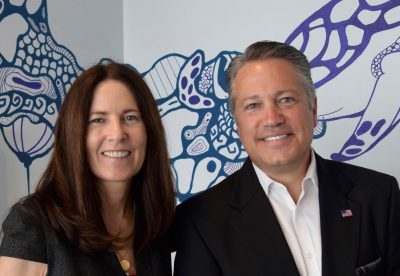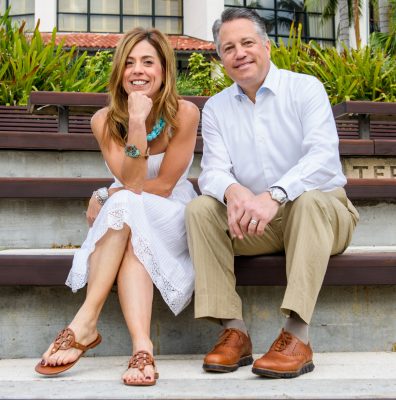Pablo Picasso wrote, “All children are born artists, the problem is to remain an artist as we grow up.” Businessman and Broward County Commissioner, Chip LaMarca’s late father played the drums and although he passed away when LaMarca and his brother were very young, his passion for music left a lasting impression: “My brother and I both loved the drums because our dad played them and we had these records with drum battles between Gene Krupa and Buddy Rich. We both went on to play throughout high school.”
LaMarca was also deeply connected to the arts and dreamed of pursuing a career in automotive design: “I loved to draw and I had a drafting table for a desk in middle school through college. I actually made a living later as an AutoCAD draftsman while attending Broward College and later Florida Atlantic University at night. ”
In his eight years as a commissioner and more recently as an elected member of the Broward Cultural Arts Council, LaMarca is fusing his business savvy and political know-how with his affinity for the arts to make Broward County more profitable and livable. Art Hive caught up with Commissioner LaMarca to talk about business, the arts, and his secret “if you could become an artist” scenario.
What role can the arts play in the economic well-being of a city?
The arts assist in creating culture in our community while driving tourism and stimulating businesses. In Broward County, the arts and culture sector is a $414.2 million industry.

People see South Florida as “sunshine, beaches, and palm trees.” How are the arts changing the optics of who we are and how we live in South Florida?
South Florida has a great image of being all about sunshine, beaches and palm trees, which I love because I represent 75% of our beaches and tourism economy. Now, with the tremendous impact the Broward County Cultural Division has made, South Florida is also known for its cultural attractions. This local agency provides services, technical assistance and grant funds that benefit residents, visitors, artists, non-for-profit cultural organizations and 31 municipalities. In Fiscal Year 2018 the Cultural Division has awarded 172 grants, totaling $5.1 million. Broward County has 249 artworks at 88 locations appraised at $21 million.
Traditionally, businesses make in-kind and cash donations to arts organizations, the organizations utilize the funds to create artistic programming, and they credit the businesses in their programs. Can you envision ways in which businesses can support the arts beyond this traditional model?
I see this model continuing, but also see the possibility of creating a new model where there is more direct involvement by the business community. The arts could be directly involved with local celebrations and countywide events. For example, Broward County celebrated our 100th anniversary in 2015 and many local artists participated in the creative presentation of our community’s history and culture. I also see the local arts being more involved in our signature events, like the Fort Lauderdale International Boat Show.

One of South Florida’s biggest issues is commercial real estate and housing costs. Does the Cultural Council try to tackle some of these issues by encouraging businesses to create mixed-use spaces for example?
Yes. Greater Fort Lauderdale has a number of facilities and enclaves that support artists and other creative professionals. One example is Studio 18 in the Pines, an 11,000-square-foot renovated 1950s hospital laundry in Pembroke Pines that reopened as studio space for fine artists through a juried process. In Fort Lauderdale, there is Sailboat Bend Artist Lofts, a 37- unit artist live/work space that is close to the Riverwalk Arts & Entertainment District. These spaces host monthly gallery exhibitions of residents and special guest artists.
If you could give up your career as a commissioner and become an artist, what kind of artist would you become and why?
In high school, my dream was to become an automotive designer or a musician and one of the schools that had interest in me was Berklee College of Music, so I might have been a jazz or concert percussionist full-time. The other path that captured both sides of my brain was graphic arts and creative design. I still have an interest in this area, from designing and branding my business and political campaigns to just sketching new ideas for the car of the future.
This article originally published in Art Hive Magazine Issue #26, which can be found here on page 36.